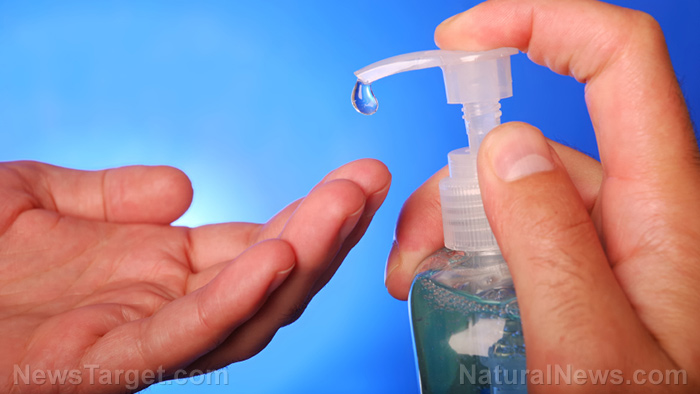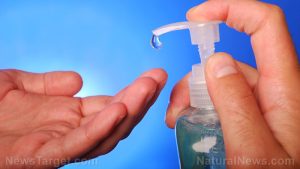
Triclosan – toxicity, side effects, diseases and environmental impacts
Tuesday, November 14, 2017 by Janine Acero
http://www.naturalpedia.com/triclosan-toxicity-side-effects-diseases-and-environmental-impacts.html

Triclosan is an antimicrobial and anti-fungal agent found in consumer products like bath soaps, lotions, deodorants, detergents and dishwashing solutions. Triclosan is also an active ingredient in toothpastes as protection from gingivitis, which causes bleeding of the gums. On its own, triclosan appears as a white crystalline powder.

List of known side effects
Depending on level of concentration, contact with this highly corrosive compound can cause allergic contact dermatitis, as well as caustic eye, mouth and gastrointestinal injuries. Signs of triclosan poisoning include nausea, vomiting, and diarrhea.
The Toxicology Data Network website has listed general effects of triclosan exposure such as irritation and discomfort to the eyes and skin. Accidental ingestion of the chemical can cause burning sensations to the throat and chest. The respiratory tract can also be affected, with severe cases leading to acute lung injury. Chronic exposures can induce hypersensitivity dermatitis or asthma with bronchospasms (wheezing).
Triclosan is also toxic to aquatic ecosystems, with long-term hazardous effects on aquatic life.
Body systems affected by triclosan
Previous studies on animal models and human volunteers showed little to no signs of irritation upon exposure to small percentages of triclosan mixed with soap solutions. Other products containing small percentages of triclosan did not induce sensitization in human volunteers as well.
However, a 2006 study on North American bullfrogs showed that triclosan is a possible endocrine disruptor. Studies on mammalian cells suggest that triclosan significantly impacts thyroid hormone concentrations.
Triclosan exposure has also been found to promote bacteria that are resistant to antibiotic medications and antibacterial products. Triclosan was also found to have bioaccumulation potential, based on studies discovering triclosan concentrations in human milk samples. This means fetuses and babies of pregnant women and breastfeeding mothers are especially at risk of triclosan exposure.
Items that can contain triclosan
The U.S. Environmental Protection Agency (EPA) has rated triclosan-containing products as highly toxic. These include adhesives, fabrics, vinyl, plastics, and textiles.
Triclosan is an active ingredient in consumer products such as soaps, toothpastes and mouthwashes, face creams and moisturizing lotions, deodorants and foot powders, cleaning products, and even in kitchenware like cutting boards.
How to avoid triclosan
Triclosan may be present in most of our personal hygiene products, but you can reduce your risk of over-exposure by considering some of these alternatives from BodyEcology.com:
- Read product labels and watch out for those with triclosan or its other names: Microban, Irgasan, Biofresh, Lexol-300, Ster-Zac, and Cloxifenolum.
- Choose handmade soaps over commercial products, or buy from manufacturers that list ingredients you can understand.
- Use homemade deodorants with coconut oil, baking soda, and essential oils.
- Replace your toothpaste and mouthwash with a simple antiseptic with baking soda and essential oils, which is a natural and gentler alternative.
Where to learn more
- Triclosan found to induce liver cancer in scientific study
- Triclosan in antibacterial soaps, toothpaste has never received safety approval from FDA
- Triclosan – Why we need to avoid this antibacterial chemical
- Triclosan may be harmful to health, says FDA
- Exposure to triclosan, parabens in pregnant women disrupts male fetal development
Summary
Triclosan is an antimicrobial agent that is an active ingredient of most consumer products such as soaps, toothpastes, and body lotions.
Triclosan can be irritating to the eyes and skin, and is a possible endocrine disruptor.
Triclosan is also present in products such as adhesives, fabrics, vinyl, plastics, and textiles.
Triclosan is known to be toxic to aquatic life.
Sources include:
Tagged Under: Tags: triclosan





